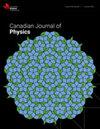Impact of fluorine and chlorine doping on the structural, electronic and optical properties of SnO2 : First-principles study
IF 1
4区 物理与天体物理
Q3 PHYSICS, MULTIDISCIPLINARY
引用次数: 1
Abstract
In this work, we carried out in depth the structural, electronic and optical properties of intrinsic, fluorine (F) and chlorine (Cl) doped SnO2, using a pseudo-potential plane-wave scheme in the framework of the density functional theory. We found that the substitution of oxygen by F or Cl elements slightly modified the crystalline parameters without altering the stability of SnO2 compounds. The doping of tin oxide by these two halogens is confirmed by the displacement of the Fermi level position to the conduction band. Consequently, the doped materials are strongly degenerate as illustrated by the Moss-Burstein shift: 2.310 eV and 2.332 eV for F:SnO2 and Cl:SnO2 respectively. On the other hand, the density of states and Mulliken population analysis show that the covalent character of Sn-O bond is maintained after doping, while Sn-X (X=F or Cl) formed bond reveals an ionic nature. In terms of optical properties after doping, intrinsic SnO2 exhibits low absorption while the doped ones are transparent in the visible range, making them more efficient in photovoltaic applications. Moreover, in the ultraviolet (UV) scale, pure and doped tin oxide compounds show better absorption, which may be beneficial for use in devices of protection against UV light and UV absorbers or sensors. Finally, the plasma frequencies of 28.22 eV, 29.16 eV and 27.67 eV for pure, F and Cl doped SnO2, respectively, were obtained.氟氯掺杂对SnO2结构、电子和光学性质的影响:第一性原理研究
在这项工作中,我们在密度泛函理论的框架下,使用伪势平面波格式,深入研究了本征、氟(F)和氯(Cl)掺杂SnO2的结构、电子和光学性质。我们发现,氧被F或Cl元素取代略微改变了晶体参数,但没有改变SnO2化合物的稳定性。这两种卤素对锡氧化物的掺杂,通过费米能级在导带上的位移得到了证实。因此,掺杂的材料是强简并的,如F:SnO2和Cl:SnO2的Moss-Burstein位移分别为2.310 eV和2.332 eV。另一方面,态密度和Mulliken密度分析表明,掺杂后Sn-O键的共价性质保持不变,而Sn-X (X=F或Cl)形成的键则显示出离子性质。在掺杂后的光学性质方面,本征SnO2表现出较低的吸收,而掺杂后的SnO2在可见光范围内是透明的,使其在光伏应用中更加高效。此外,在紫外线(UV)尺度下,纯氧化锡和掺杂氧化锡化合物表现出更好的吸收,这可能有利于用于紫外线保护装置和紫外线吸收器或传感器。最后,获得了纯、F和Cl掺杂SnO2的等离子体频率分别为28.22 eV、29.16 eV和27.67 eV。
本文章由计算机程序翻译,如有差异,请以英文原文为准。
求助全文
约1分钟内获得全文
求助全文
来源期刊

Canadian Journal of Physics
物理-物理:综合
CiteScore
2.30
自引率
8.30%
发文量
65
审稿时长
1.7 months
期刊介绍:
The Canadian Journal of Physics publishes research articles, rapid communications, and review articles that report significant advances in research in physics, including atomic and molecular physics; condensed matter; elementary particles and fields; nuclear physics; gases, fluid dynamics, and plasmas; electromagnetism and optics; mathematical physics; interdisciplinary, classical, and applied physics; relativity and cosmology; physics education research; statistical mechanics and thermodynamics; quantum physics and quantum computing; gravitation and string theory; biophysics; aeronomy and space physics; and astrophysics.
 求助内容:
求助内容: 应助结果提醒方式:
应助结果提醒方式:


